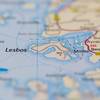Wärtsilä's Dual-Fuel Engined Power Module For FPSO Upgrade
Currently being converted into an FPSO (floating production, storage and offloading) vessel from a VLCC tanker at the Jurong shipyard in Singapore, Berge Hus is destined for operation on the Ceiba oil field off Equatorial Guinea. Oil was reached in the Ceiba field by another Bergesen FPSO vessel, the Sendje Berge, in November 2000.
The sister ship Berge Hus will take over work on that field in the first quarter of 2002 to complete the planned ten production wells and four water injection wells, and continue handling the crude oil produced from the field.
The Wärtsilä Power Modules are ready-made units designed and built specifically for the offshore oil and gas industry. They meet all the requirements for the application in terms of safety, reliability, quick installation and rapid commissioning, as well as complying with all relevant regulations including classification requirements. Designed and assembled by Wärtsilä as total packages complete with all necessary ancillaries, the modules can be test run with natural gas or diesel fuel oil before delivery to the site. Wärtsilä supplies the Power Modules as an EPC contractor, including responsibility for transport, test running and commissioning of the plant.
In the Power Module supplied for Berge Hus, the engine is a Wärtsilä 18V32DF dual-fuel engine with a maximum continuous output of 6,030 kW at 720 rev/min. The complete unit measures 58 x 18 x 20 ft. (17.7 x 5.4 x 6 m) (43 ft. (13 m) including the exhaust stack). It weighs 201 tons for transport and 225 tons when in operation with all supplies (fuel, water and lubricating oil), and has fire insulation to class A60, and a noise level of less than 85 dB(A) at 1m.
The Wärtsilä 32DF dual-fuel engine runs simultaneously on natural gas and diesel fuel oil. Natural gas is supplied at a low pressure to the engine and is taken directly from the oil/gas production. The engine is fully capable of switching over from gas to liquid fuel (marine diesel oil or gas oil) automatically should the gas supply be interrupted, while continuing to deliver full power.
The Wärtsilä 32DF engine was introduced in 2000 to marine applications to meet the requirements of a new safety class for installations with a gas pressure of less than 10 bar in a single-pipe arrangement. It thus provides an alternative to the Wärtsilä 32GD gas-fuelled engine, which has been highly successful in the offshore market. A total of 38 Wärtsilä 32GD engines are in service and on order, with the first having been delivered in 1989.
Whereas the gas-diesel engine (as in the Wärtsilä 32GD type) injects high-pressure gas fuel into the engine cylinders, the DF type employs gaseous fuels at low pressures. In gas mode, the DF engine operates according to the lean-burn Otto process. Gas is admitted into the air inlet channels to individual cylinders during the intake stroke to give a lean, premixed air-gas mixture in the engine combustion chamber. Reliable ignition is obtained by injecting a small quantity of diesel oil directly into the combustion chamber as pilot fuel. The DF engines use a "micro-pilot" injection with less than one percent of the fuel energy requirement at nominal load.
The Wärtsilä 32DF engine has clear environmental benefits. It has low NOX emissions, about one-tenth those of the standard diesel version.
The combination of the engine's low fuel consumption and its maximum use of natural gas means the Wärtsilä 32DF also has low CO2 emissions.
An important contribution to satisfactory running of the Wärtsilä 32DF engine comes from the application of full electronic control. It uses an electronic control system based on the Wärtsilä WECS 8000 system. When running on gas with a premixed air-gas mixture and micro-pilot injection, the combustion must be closely controlled to prevent knocking and misfiring. The WECS 8000 control system provides control of the air-gas ratio, and the quantity and timing of the pilot fuel injection to keep every cylinder at the correct operating point between the knock and misfiring limits. The pilot fuel system is a common-rail system with one engine-mounted high-pressure pump supplying diesel oil to the injection valves at a constant pressure of 900 bar. The gas fuel is supplied to the engine at a pressure of less than four bar.











